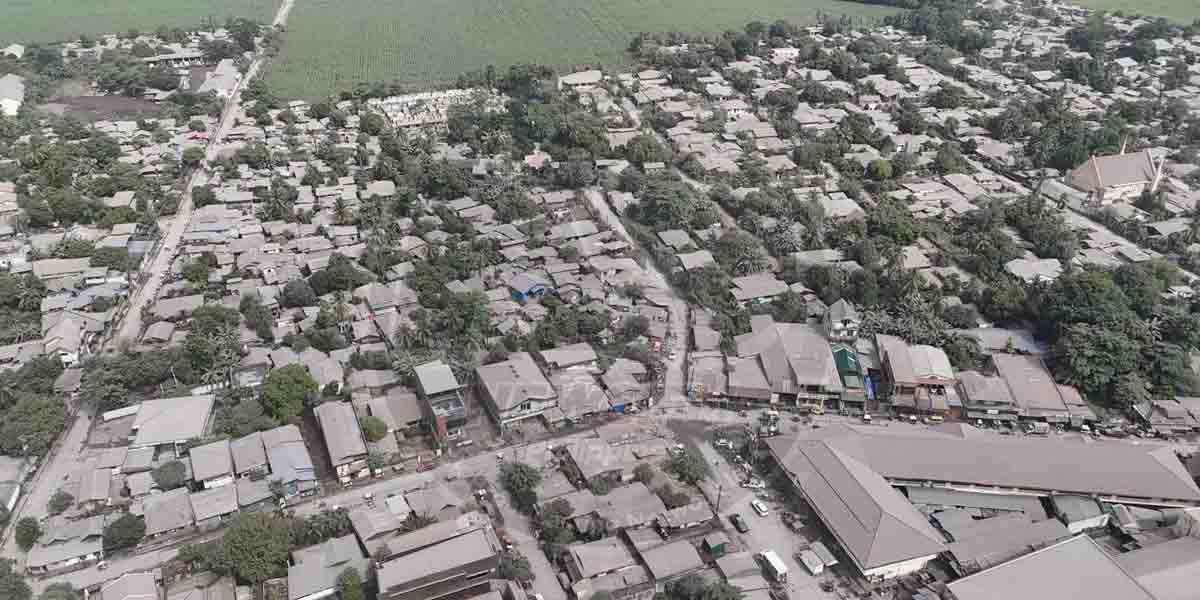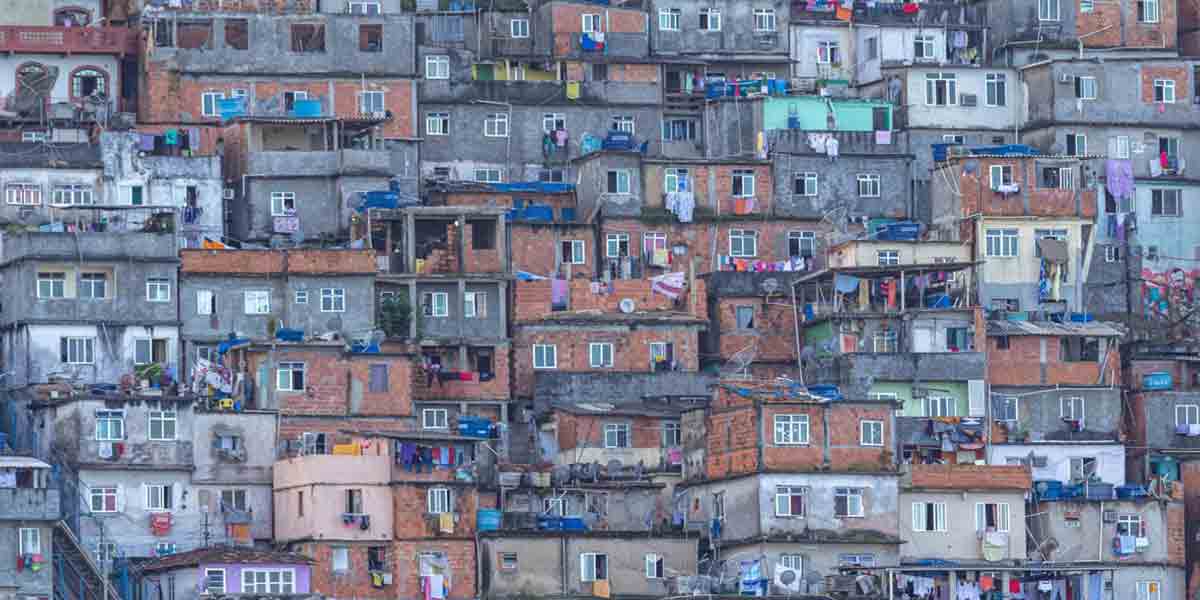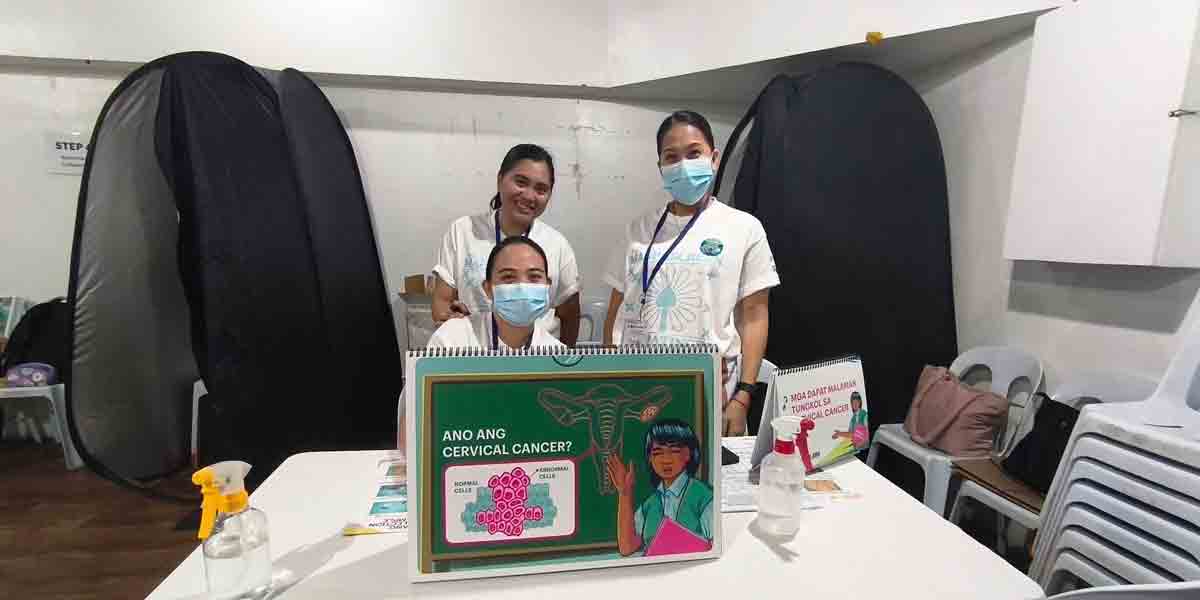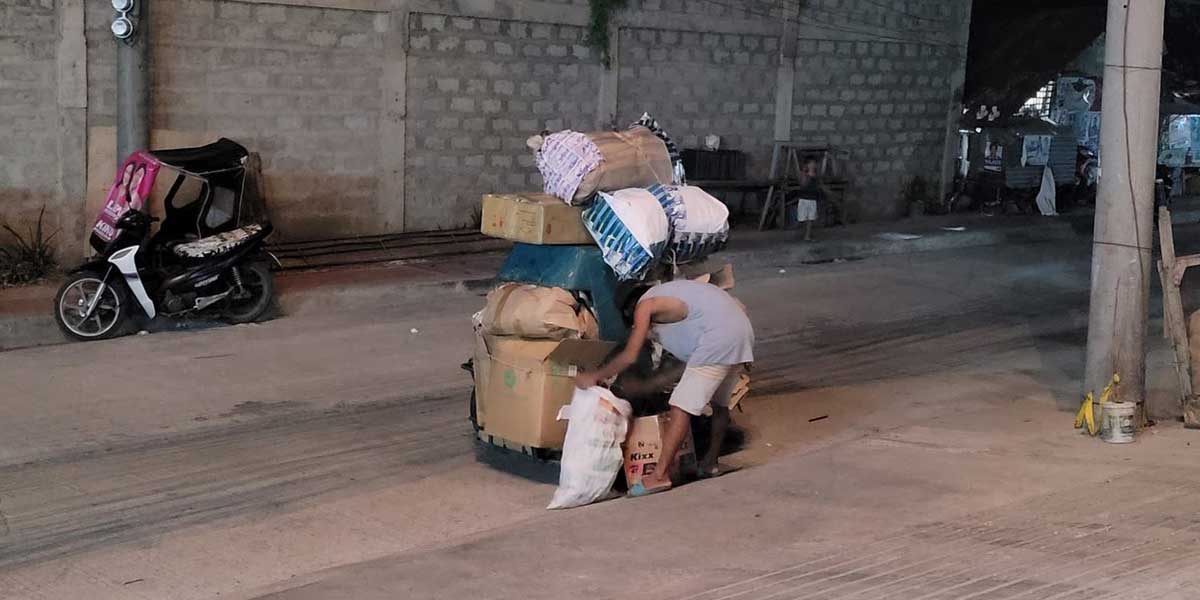By Herman Lagon
(This article was written a few days after the ‘death-defying’ experience of the author and his mentor during the Typhoon Frank tragedy in Iloilo in 2008)
It was an experience of life, death, and loads of Toblerone.
That weekend, I thought it was just the typical brownout-causing Typhoon. With the backdrop of a biblically deluge-like downpour, I wantonly slept myself away from 11 p.m. on Friday (June 20) until 11 a.m. on Saturday (June 21). I thought this Typhoon would pass, and I needed all the rest I could to recharge for my school chores in the Ateneo de Iloilo next week.
At 11:30 a.m., half-conscious, I went down to our house toilet to take a leak. As I stepped on the tiled floorboard, which has a foot depression from our main floor, I was greeted by water all over the place. Light brownish rainwater turned our comfort room into a kiddies’ swimming pool!
But it didn’t surprise me a bit. I told myself that Jaro is just like this every time heavy rain falls; there is almost a fictional working drainage system to start with. More so, our place is near the lowland CPU area. Water peeping some inches away from our floor and a warning siren squealing everywhere is just normal, very ordinary.
When I turned on the battery-powered radio, screaming reporters described details of a flash flood as if it were the end of the world. I told myself this was another typical sensationalized broadcasting modus operandi employed by people on the airwaves just to gain the alluring temptation of ratings.
So I tried to go back to my lovely, inviting bed and doze out myself anew for an hour. Then, the great shocker: my daughters, Psyche and Parvane, whom I also convinced to sleep and save energy for the next tasking Ateneo week of schoolwork, woke me up and informed me that the water had turned from dirty white to Milo brown, and it is rising very fast. I immediately left our mezzanine floor and was stunned by what was happening. Everything on the main floor and in our small backyard, including my motorcycle, was swimming, engulfed by muddy waters that smelled like they came from the boondocks.
As a typical science teacher, I then took data from the radio and approximated the rate of increase in the water level. Perhaps it was providential that my cellphone was just charged in school the other night, and so I had the luxury of texting my other colleagues, asking about their state in real time. Most of the replies were just replays of what the radio reporters on-site were talking about.
Then, at 11:40 a.m., a text from my principal, Ma’am Au, came, telling me that the main floor of her house was at Brgy. Cuartero, Jaro (just about 600 meters away from our house) is already ravaged by the “mud flood” with “hehehe” after the message. I thought it was just a joke, a coping mechanism by my ever-strong-willed mentor. But based on the radio dispatches, the area was a Frank “hot spot.”
So I texted my principal, asking her if she was alone in her house, knowing her busy, on-call medical doctor daughter was not always there. An hour later, she replied, “I am alone, and I am now on top of my bed with Jake (her Labrador dog).”
And that’s the cue. Although she didn’t tell me to go there and help, the graphic description of my 60-or-so boss standing on her bed surrounded by floodwaters is enough to signal danger.
But deciding to go there is not easy, for going there means leaving my family under Frank’s attack. I told myself it must not be a pick between one and the other. I must decide by measured deduction.
And so, I devised a plan. I told myself I had to use science to make the right calculated choice. I am, in the first place, a physics teacher. Juxtaposing the records like the path of the scheming Typhoon, the descriptive air reports, the rate of increase in flood tide as to the average ocean tide, the source of the flash flood, wind direction, and the manner of rainfall, I theorized that the most likely maximum flood height will be reached at around 1:30 p.m.
And so, I waited and found out that the rising water seemingly stopped at 2 p.m. Only then did I decide to go and “visit” Ma’am Au. So I changed, left my cellphone in my school bag, and placed P200 bills and my identification card in my side pocket, just in case.
Wearing a black “Teatro Atenista” shirt and dark-brownish, baggy shorts, I braved the stomach-deep, river-like 300-m stretch of Lopez Jaena, Jaro. In just a few steps, I realized that the slippers I wore were useless due to the 6-inch-deep mud. So, I had to wade through barefoot (good thing I didn’t have any open wounds that time).
I tried the first pass via the CPU fifth gate route but retreated due to the rising, gushing tide. As I braved through the Lopez Jaena stretch, I tried to pass through Fajardo Street from the other end, but it was worse than the previous one. At the intersection of Lopez Jaena and Fajardo, the current of the seemingly flash mud flood reminded me of the great Niagara Falls, but this time, it was scary rather than lovely. Here, I can already hear the raucous splash of the angry water.
My third choice was Santa Isabel Street, just a block from Fajardo. But it was again “unpassable.” Even the six-by-six government trucks could not withstand the wrath of the maddening current.
Then I tried to take it through the Jaro Elementary school just behind the Jaro Cathedral (which was then turned into an instant refugee camp). But the situation there was worse. People were hauled to cross the lake-like intersection via a wobbly orange inflated boat attached to an inch-thick rope, with about three rescuers trying to stabilize the contraption. I even overheard a bystander jesting in Hiligaynon: “The boat may instead kill rather than save others.”
I tried to take the fifth alternative—asking the government dump trucks to ferry me to Ma’am Au’s place. But when I had a chance to see one, the driver, even if I had already told him that my “Lola” was trapped. I needed his help (of course, I thought I must exaggerate things a little bit ad hominem to get his precious yes); I was only greeted with a poker face as if the driver had heard the same tale repeatedly with no solution to offer. The area needs a pump boat or an Amphibian tank, not a truck; I just consoled myself amid rejection.
After the busy rescuers’ hopeless help-seeking, I was left with no choice but to choose the sixth recourse: the one near Ted’s Batchoyan in Jaro Plaza, the one they call Libertad Street. The path was less treacherous. I could also see a handful of bold, warm bodies cutting through the chest-deep muddy waters at the end of the two-block street.
Ma’am Au’s place is just about 300 meters from the Jaro Plaza. Although it also means a three-century stretch of mud and water, I joked to myself that at least the path is not full of thorns and land mines.
And so started my 16-hour calvary.
The first block was just a breeze, although I had to use a bamboo stick to ensure I was stepping on pure mud and not sharp edges.
Then, the crossing came. I needed to pass through it while walking sideways. My body was streamlined to the direction of the strong current while I walked perpendicular to it. A few others who passed the same way needed to do this while holding hands just to make sure that they wouldn’t be literally swallowed by the furious flash flood.
For me, the other intersection near Fajardo was the most trying part of my journey. Chest deep, the muddy water moved like small lines of raging bulls. They were so fast and robust that local Tanods needed to place a one ½-inch thick nylon rope across the street to keep the few but daring passers pass through it unharmed.
Before I even reached the line’s starting point, the water firmly pushed me to the nearby concrete wall. It was a good thing a similarly struggling Tanod gave me a hand to cling to the rope.
Just as I thought the worst of it had passed, I had to cross the 6-meter street-turned-kayaking area with only my bare hands and the improvised cable. Although the Tanods were there to “cheer” us, I was left by myself to do the crossing, and before I knew it, I was already “floating” horizontally with my hands holding the rope as if it was the last day of my life.
Inch by inch, I tried to move to my left while in a prone floating position with a strong current of mudwater gushing through my body. My floating body is paralleled at about one and ½ meters from the ground. Halfway through the rope, I almost lost my grip, but I braved it nonetheless, for losing my hold might mean my early death. When I eventually completed my daring ordeal, I was greeted with a big tap at the back by a Tanod on the other end, telling me that I did it well. I didn’t care anymore about bothering him and asking what he meant.
So, I proceeded straight to the lower portion of Fajardo Street, where I had to pass through the side fences of the houses, ala Spider-Man-Aquaman. The water was already nose-deep, and I couldn’t pass through the middle part of the road, for the mad current had turned it into a death trap. I was left with no choice but to start swimming through the edges of the road, where cars were already floating like logs. People in their second-floor houses watched me, perplexed.
Then, I reached another crossing near the Jaro I Elementary school and the Brgy. Cuartero Outpost. They’re just under the roof of an almost drowning beauty shop; I already started to think of going back and waving the white flag. However, the worsening condition strengthened my resolve to proceed to my target. I told myself I had come this far and must not give up. Ma’am Au may need my help (I didn’t know what kind of help I could give her now) in this kind of Bangladesh-disaster-like situation.
The current was already too much for me to handle. I could barely move an inch from where I stood (or swam; I didn’t know exactly what I was doing by then). I clutched at the window grills of the “sunken” parlor and waited (buoyed) my way for my next plan while looking at the cabinets, small snakes, wooden planks, and plastic containers floating (or swimming in the case of cold-blooded vertebrae) through the river-like street.
Then, I saw a group of residents sheltered at the other side of their elevated house, rummaging through whatever items they could see drifting in the virtual stream. After minutes of waiting, I made a sign for help, and they threw me a rope so that I could at least get into their place (which is just an eskenita away from Ma’am Au’s house) for quick refuge. I asked them about “the way to the white Korean building,” my best reference for my target’s house. They told me that the area was only 100 meters away from where I was and was already two meters deep.
After a few minutes of rest, I started swimming through the narrow passageway towards Ma’am Au’s house. This 100-meter stretch of deep, flowing mud water is one of my most unforgettable and closest encounters with the Grim Reaper. Exhausted, I used all the possible swimming styles to make a few centimeters forward. I tried the backstroke and laughed at myself for doing such (and drinking mud water in the process). All my life, I thought the fancy dog style was ridiculous, but that situation proved otherwise.
Along the way, I had to freestyle-dog style myself from place to place where I had nothing to cling to. I often clung to walls of many kinds—bamboo, concrete, galvanized iron, grills, cactuses, and bougainvilleas. One time, I had to move using the floating tricycle as my life vest of a sort. While doing this, I saw tiny houses with only roofs left to be seen and luckier people on their second floors staring at me, perhaps confused about the senselessness of what I was doing.
After drinking a glassful of mud water and chilling in the cold afternoon, I reached my principal’s house. Only the other half (the upper portion of the windows and roof) was visible, and only an inch of the concrete fence was exposed. I perched on it to rest for a minute while Labrador Jake barked at me. Then it rained anew.
I called Ma’am Au up, and she was at her grilled window, equally surprised by my presence amid the flood. Swimming through the screened pane, I saw her bobbing with barking Jake at her side. In the downpour, I thought I heard snatches of her voice telling me to pass through the back door. Little did I know that from where I was, many cacti were barricading, so I had to take them out and swim through the back door, which I did not know where.
I realized that the slippers that I tried to use as mini oars had been useless since the start, so I placed them in one of the house windows before I proceeded to the back portion of the house. A day later, I discovered the pane where I put my tsinelas was about nine feet high.
Looking for the back door swimming was a great struggle for me. The place seemed like a small kitchen, and many pointed things like corrugated steel greeted me like hideous teeth of beasts from hell. What if I step on these sharp things or get snagged by pointed kitchen wares?
Finding the back door had been difficult already, but when I realized that it was locked from within, I thought Hades was making fun of me big time. Suspended on an instantly improvised Styrofoam floater, I kicked and banged the door hard just to force it open. The water and the floating refrigerator made it more difficult to let loose. But persistence ruled, and eventually, the wooden door slowly gave way.

























